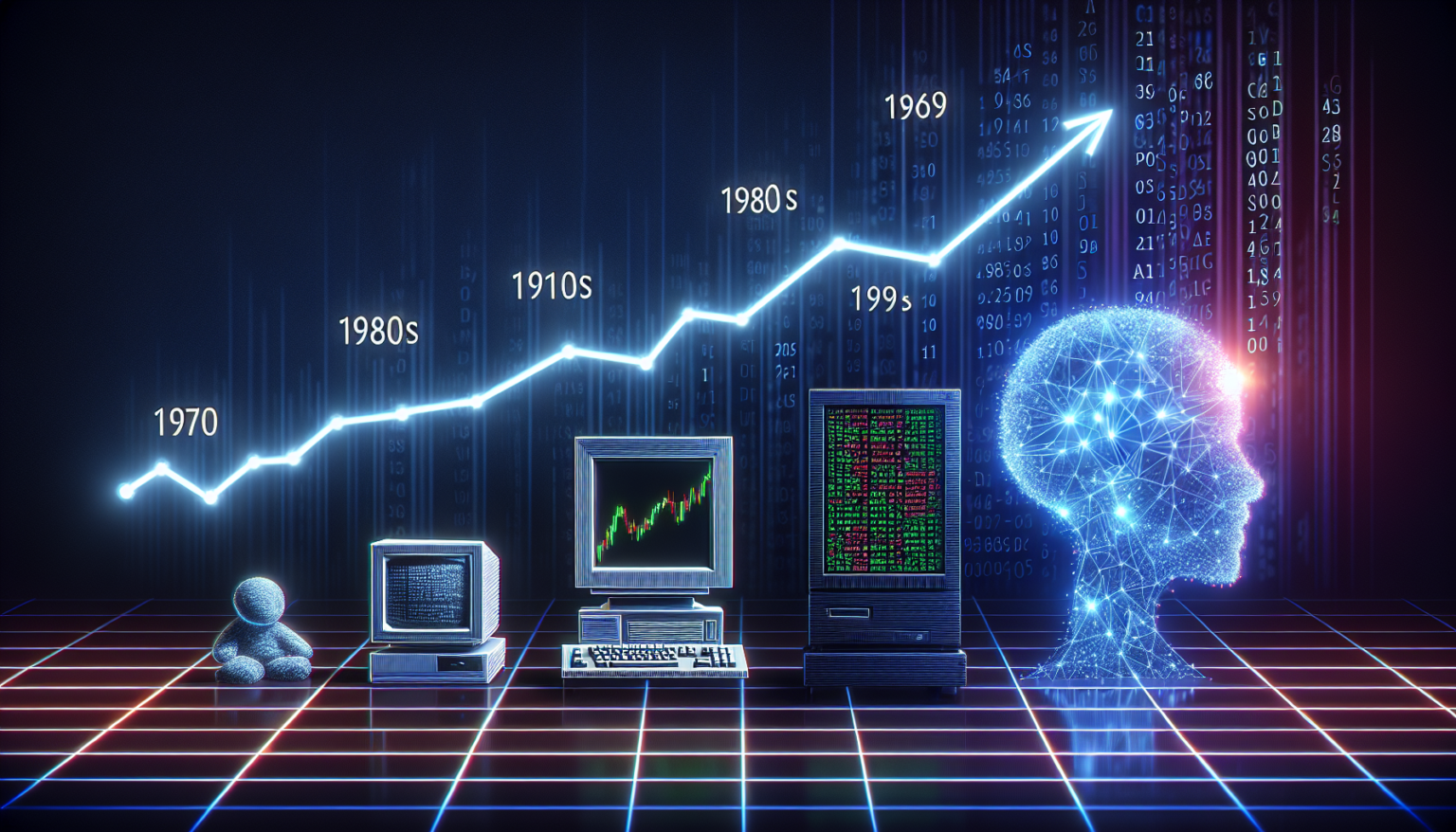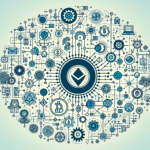The Dawn of Algorithmic Trading
The Concept of Algorithmic Trading
Algorithmic trading has revolutionized the financial markets by using computer programs to execute trades at speeds and frequencies that humans simply cannot match. At its core, algorithmic trading revolves around mathematical models and formulas to create rules for trading, which can be based on factors like timing, price, quantity, and more.
The Early Days: Simple Scripts
In the initial stages, algorithmic trading was relatively straightforward. Early traders might use simple scripts, often programmed in languages like Perl or Java, to automate repetitive manual tasks. These scripts typically facilitated basic trade executions based on single conditions, such as stock price thresholds or trading volume.
The Advent of Automated Trading Systems
As technology advanced, so did the capabilities of these simple trading scripts. The 1980s saw the introduction of automated trading systems that could handle multiple conditions. However, these systems were still quite limited, primarily focused on executing trades at a specific time or when certain market conditions were met.
The Rise of Quantitative Trading
Introduction to Quant Strategies
As the 1990s approached, the field of quantitative finance began to gain traction. This era marked the transition from simple trading scripts to more sophisticated quantitative strategies. Traders began to employ complex mathematical models to analyze price movements and market data.
The Birth of High-Frequency Trading
High-frequency trading, or HFT, emerged in the early 2000s, characterized by ultrafast execution and the ability to capitalize on minute price discrepancies. HFT firms utilized advanced algorithms that operated in microseconds, executing thousands of orders per second. This phenomenon not only increased market liquidity but also raised concerns about market volatility and the fairness of trading practices.
Infrastructure Upgrades
The rise of HFT demanded significant upgrades in trading infrastructure. Exchanges began to introduce co-location services, allowing firms to house their servers in close proximity to exchange networks for faster trade execution. The competition intensified as every millisecond became crucial for profitability.
The Integration of Machine Learning
The New Era of AI in Trading
As technology continued to evolve, so did the algorithms. By the late 2010s, machine learning and AI began to enter the trading landscape. Unlike traditional algorithms, which relied on predefined rules, machine learning algorithms are capable of learning from past data and adapting to new information. This marked a significant breakthrough in the capabilities of algorithmic trading.
Data-Driven Decisions
AI-driven algorithms could sift through vast amounts of data, identify patterns, and make predictions with a high degree of accuracy. This opened doors not only for trading stocks but also for other asset classes such as forex, commodities, and cryptocurrencies. With the ability to analyze unstructured data like news articles and social media sentiment, these algorithms could respond to real-time market changes.
Neural Networks and Deep Learning
In the realm of AI, neural networks and deep learning became particularly popular among traders. These systems simulate the way human brains work, allowing them to make incredibly nuanced decisions based on a mix of historical data and real-time events. For instance, neural networks could identify and predict trends based on subtle indicators that simpler algorithms might overlook.
The Current Landscape of Algorithmic Trading
Algorithmic Trading Strategies Today
Today, the range of algorithmic trading strategies is vast. From arbitrage strategies that exploit price differences across markets to momentum strategies that capitalize on existing trends, the sophistication of these algorithms has increased manifold.
Execution Strategies
Execution strategies dictate how orders should be placed for maximum efficiency and minimal market impact. Techniques like VWAP (Volume Weighted Average Price) and TWAP (Time Weighted Average Price) help traders execute large orders over time without significantly affecting the market price.
Risk Management Techniques
With increased complexity comes the need for robust risk management techniques. Modern algorithms incorporate risk assessment tools, adhering to predefined risk factors to ensure that trades do not expose firms to unintended consequences. This is essential given the speed at which trades can be executed and the potential consequences of trades gone awry.
Regulatory Environment
As algorithmic trading has become more prevalent, regulators have taken a keen interest in ensuring fair practices. Regulations such as the European Markets Infrastructures Regulation (EMIR) and the Dodd-Frank Act in the United States have established guidelines to promote transparency and reduce systemic risks associated with high-frequency trading.
The Future of Algorithmic Trading
Predictive Analytics and Behavioral Finance
Looking ahead, the integration of predictive analytics and behavioral finance may define the next phase of algorithmic trading. Predictive analytics uses data mining and modeling techniques to forecast future outcomes, while behavioral finance examines how psychological factors influence market behavior. Combining these fields could lead to trading algorithms that are even more attuned to market sentiment.
Ethical Considerations and Challenges
As algorithms take on a more significant role, ethical considerations also come into play. There are concerns about the potential for market manipulation and the impact of automated trading on retail investors. The challenge remains to strike a balance between leveraging technology for efficiency and maintaining a fair trading environment.
The Role of Human Oversight
Despite the advancements in algorithmic trading, the necessity for human oversight remains paramount. Traders and analysts must continually monitor algorithm performance, conduct backtesting, and adjust parameters as needed. This human-element ensures that algorithms do not operate in isolation, fostering a collaborative approach to trading.
The Integration of Blockchain Technology
Blockchain technology promises to introduce another layer of innovation. The transparency and security offered by decentralized ledgers could revolutionize how trades are executed and recorded. Algorithmic trading could benefit from more reliable transactional data, further enhancing trading strategies.
Conclusion
The evolution of algorithmic trading illustrates a remarkable journey from simple scripts to complex AI solutions. It highlights the interplay between technology and finance, shaping how trading occurs today and paving the way for future innovations in the ever-changing financial landscape.








